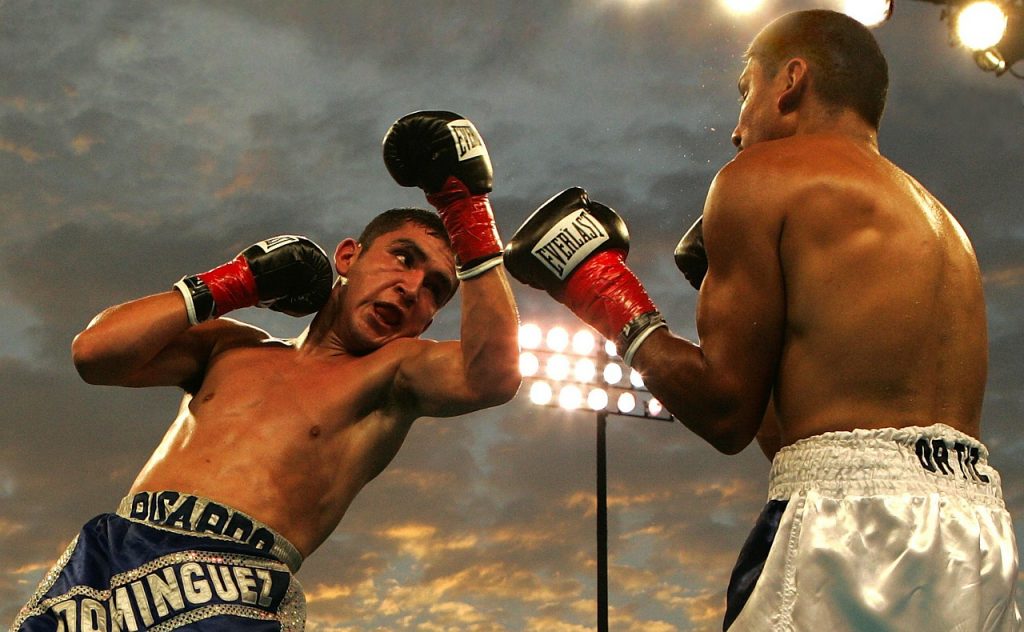In recent years, the popularity of boxing among people of the younger and older age group has been steadily growing. This fact is due to the fact that modern youth strives to be not only physically developed. They also understand that in the modern world you need to be ready for everything, and in a difficult situation, when words cannot solve anything, you need to stand up not only for yourself, but also be able to protect people close to your heart.
In this article, we offer you some sparring tips that will be useful for both novice boxers and those who are already thinking, but have not yet made the final decision, to sign up for the boxing section.
1. Study your opponent
The aggressive athlete will usually attack first, while the smart and cunning boxer will counter-attack. If you see that your opponent wants to strike, dive in or step back to answer him. If the opponent himself wants to respond with a counterattack, distract him with a false blow, deviate and retaliate with a right hook. In case the opponent has chosen a passive strategy, which can often be seen in large boxers who think that they are stronger and faster than you, throw a hard blow to the gloves and hit the body.
2. Hit the body, jab high.
This advice is self-explanatory. Apply the jab to the head, then to the body. A common mistake among young novice athletes is that they are overly excited and completely forget about attacks on the body. So: step forward, then a heavy jab, move your head down, dive and hard right punch in the stomach. REMEMBER! That blows hitting the upper abdomen, that is, the solar plexus, will cause more damage to the opponent. An excellent alternative to the above tactics is considered to be a low dive, a tilt to any side, a jab on the body, and when the opponent removes his defense, in order to close, you quickly get up and strike him in the head from the right.
3. Keep your feet on the ground.
A common mistake for beginners is to throw out combinations of many punches, and even with the legs off the floor. REMEMBER! When attacking, your feet must be firmly on the ground, otherwise your punches will not be as powerful as you would like. In addition, you lose your balance for a while, which means that you remain vulnerable and may be knocked down.
4. Don’t strain yourself.
You should not be afraid of an opponent or overdo it in the ring. A smart boxer will allow the opponent to work actively. If your opponent started desperately and wants to lose the accumulated energy, let him do it, let him wear himself out. Most beginners who choose this tactic will not survive even a few minutes in the ring if they jump like hares from corner to corner, throwing endless and meaningless blows. Wait for the moment, and when he is wound up, take control of the fight.
5. Correct breathing.
Don’t forget about breathing, don’t stop breathing! Control your respiratory system, whether you attack or defend. You can train your breathing by moving around the ring at a certain pace, and receiving punches from another boxer, of course, of a smaller weight category. This exercise is recommended for beginners as a great way to learn to control breathing, conserve body energy and stay calm in the ring. REMEMBER! Too fast fatigue is due to the fact that novice athletes do not know how to control their breathing, especially when counterattacking or defending.

6. You have to look at your opponent.
Young and inexperienced athletes often do not look at their opponent when he attacks him. Their gaze is directed somewhere to the side, but not at their sparring partner. Looking somewhere to the floor or to the side when attacking an opponent will not make him stop! While in defense, you should see the enemy, because only in this case you will be able to block, if not all, then most of his attacks. This also applies in cases of attacks. When attacking or counterattacking, you must see your sparring partner in order to know where you are hitting and whether the hit has reached its target. REMEMBER! If the boxer clearly sees his opponent, then his punches will be harder and more accurate.
7. When to use the jab?
The answer is always! Even if you are unsure – hit! After all, the jab is used not only to inflict more damage on the opponent, but also in cases where the athlete wants to probe the opponent before carrying out more powerful attacks. With jabs, you can drive your opponent into complete confusion, interrupt his attack, and also create a small space that is enough to get out of the corner. But REMEMBER! Jebs are different! You can use hard or soft jabs, or you can stretch out “half of your hand” and from this position make a swift jab. Pair, join jabs and match them with other moves!
8. Don’t make pointless movements.
Do not rush to waste energy on combinations of many pointless punches, be careful! Make combinations of three, maximum five beats.
9. Don’t hesitate.
No need to wait for the sparring partner to finish the attack to answer him! Having received the first blow from your opponent, interrupt his attack and get out of this position. REMEMBER! Don’t sit in defense for too long!
All training in the boxing section are carried out only in the presence of a trainer and in accordance with the personal results of each boxer. In case of significant success of a particular athlete, the coach may decide to participate in this progressive boxer in the competition. With regular training in the boxing section, all athletes will have to try themselves both in sparring and in real combat, but already with athletes from other schools.
